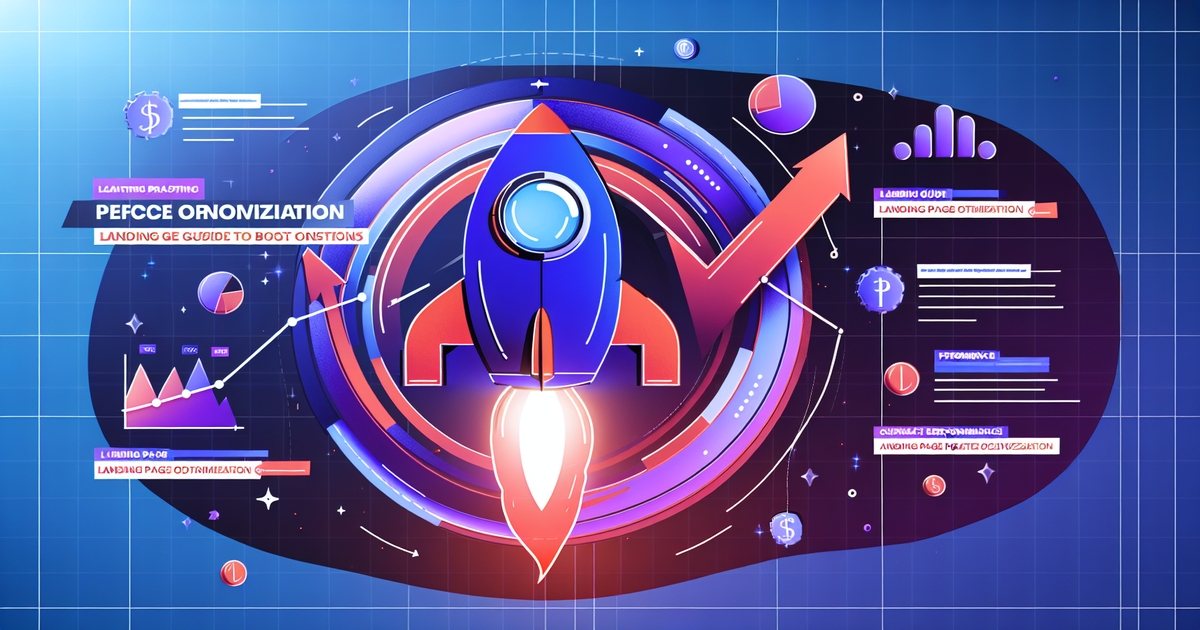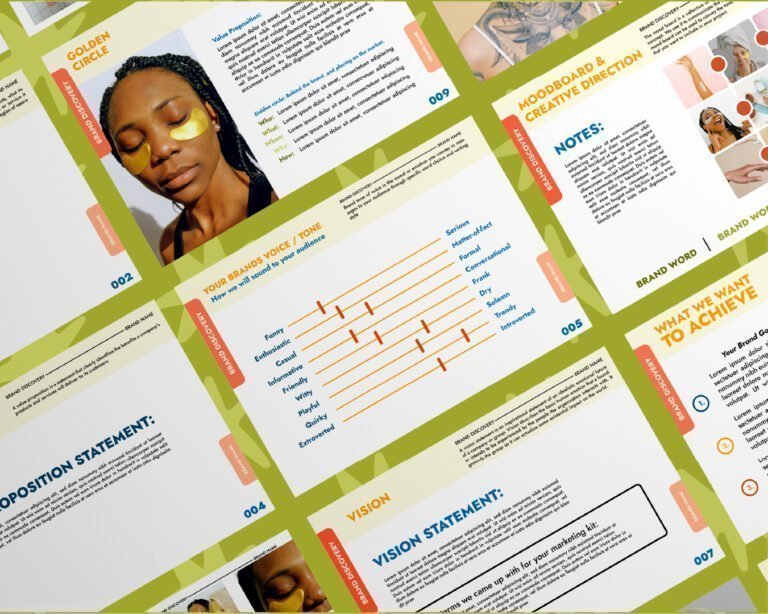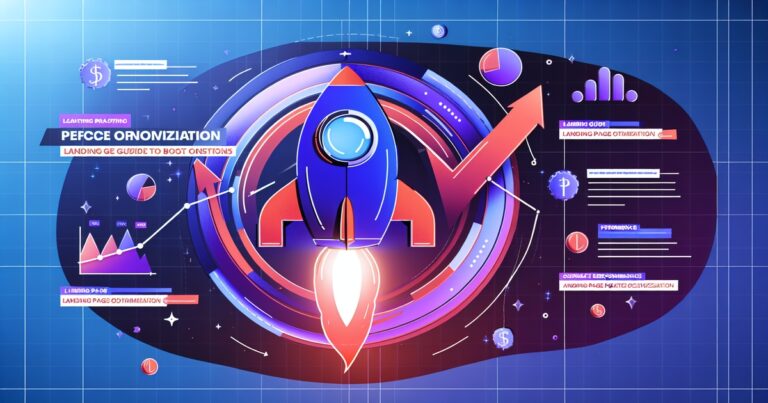Landing page optimization for PPC isn’t just a trend; it’s a revolutionary approach that has reshaped digital marketing strategies, targeting brand awareness and keyword relevance, since the early days of online advertising on websites. In the fast-paced world of pay-per-click campaigns, where every click counts and competition is fierce, optimizing your landing pages can be the difference between soaring conversions and wasted budgets. This post dives into why mastering this craft is crucial for marketers aiming to maximize their ad spend efficiency. We’ll unpack actionable tips and insights to ensure your landing pages not only attract but also convert visitors, turning clicks into customers in a blink.
Key Takeaways
- Focus on creating landing pages that are not only optimized for PPC but also provide a seamless user experience to boost conversions.
- Incorporate key elements such as clear calls-to-action, compelling headlines, and engaging visuals to make your landing pages more effective.
- Utilize A/B testing regularly to identify the best-performing elements on your landing page and apply those insights for continuous improvement.
- Leverage audience segmentation to deliver more personalized and relevant content, increasing the likelihood of conversion.
- Apply technical SEO techniques to ensure your landing pages are easily discoverable by both search engines and potential customers.
- Make use of specialized tools and resources for landing page optimization to streamline the process and achieve better results faster.
Understanding PPC and SEO
Key Differences
Organic SEO and PPC have different goals. Organic SEO focuses on long-term traffic growth. PPC targets immediate results. PPC landing pages must grab attention quickly. They often include clear calls-to-action (CTAs), benefits upfront, click marketing, leads, brand awareness, and PPC ads.
PPC landing pages are designed for conversions. They use persuasive elements like testimonials, trust badges, and limited-time offers on their website, targeting consumer brand awareness. These features encourage quick decisions from visitors.
User intent varies greatly between organic search results and PPC ads. People clicking on ads have a specific goal in mind, such as buying a product or signing up for a service. Thus, landing page optimization for PPC is crucial to meet these consumer expectations directly, targeting their need and optimizing ad spend.
Balancing Optimization
Optimizing both for search engines and user experience is key to success in digital marketing campaigns involving PPC strategies. Finding the right balance between keyword density and readability ensures content appeals to both Google’s algorithms and human readers, meeting the need of the consumer.
Content relevance and consumer need play a huge role in achieving better Quality Scores with Google Ads.
- Aligning ad keywords with landing page content boosts relevancy.
- This alignment improves ad rankings without increasing costs.
Elements of High-Converting Landing Pages
Compelling Headlines
A headline is the first thing visitors see. It must grab attention. Use action-oriented verbs to make consumers feel the need to click. Your headline should match your PPC ad copy. This keeps messages consistent.
Testing different headlines helps find the best one. Try various versions and see which meets consumer needs and gets more clicks and conversions.
Optimizing Visuals
Images can speak louder than words on a consumer need-focused landing page. Use high-quality, relevant images that support your message. They should not distract but enhance the user’s experience.
Optimize images for quick loading without losing quality. Slow pages lose visitors fast. Also, use alt text with keywords for SEO benefits. This improves visibility in search engines.
Clear Messaging
Your value proposition tells visitors why they should choose you to meet their consumer need. Keep it clear and upfront. Use bullet points or short paragraphs to make information easy to digest.
The messaging on your landing page must align with the consumer need promised in the PPC ad. This ensures a seamless transition from ad to landing page.
Enhancing User Experience
Mobile Optimization
A mobile-first approach is crucial for landing page optimization for PPC to meet consumer needs. Most users access websites via their phones. Designing with a mobile perspective ensures the site meets their expectations.
First, test touch interactions. Users should navigate your page easily on any device. Next, focus on image and layout optimization. Images need to load quickly even on slower mobile networks to keep visitors engaged.
Remember, a fast-loading, easy-to-navigate page keeps users interested longer and addresses the need for efficiency.
Page Load Time
Page speed is vital for keeping user interest high. Slow pages drive users away before they even see what you offer.
Compress images and use caching techniques to improve load times as needed. Avoid heavy JavaScript and CSS files that bog down loading speeds. Use tools like Google PageSpeed Insights regularly to check your page’s performance and make necessary adjustments.
By ensuring your landing pages load swiftly, you enhance the overall user experience, making it more likely visitors will stay and convert.
Design Intuitiveness
An intuitive design guides users smoothly towards conversion without confusion or distraction.
Follow a logical flow of information from start to finish. This helps consumers understand what you offer and why it matters to them quickly.
Use clear CTAs that stand out visually on the landing page; these are essential for guiding visitors towards taking action—whether signing up, making a purchase, or learning more about your services or products.
Keep navigation minimal within the landing page itself; too many options can distract from the main conversion goal.
Improving user experience through mobile optimization, faster page load time, and design intuitiveness not only enhances how consumers interact with your website but also significantly boosts PPC campaign effectiveness by increasing conversions while lowering bounce rates.
Leveraging Content for PPC Success
Crafting Content
Keyword Focus
Identifying high-converting keywords is crucial for PPC campaigns. These keywords should be specific and relevant to your ads. Place them naturally within the first 100 words of your content. This helps in capturing the reader’s attention early on.
Using LSI (Latent Semantic Indexing) keywords supports main keyword themes. They enrich your content, making it more discoverable by search engines. Think of these as supporting actors that boost the star of the show – your primary keyword.
Engaging Copy
Your copy must speak directly to user pain points with benefits-driven language. Ask yourself, “What does my audience need?” Then, answer this question clearly in your copy.
Use persuasive language to encourage conversions. Phrases like “Claim your free trial” or “Get started today” can push readers towards taking action. Keep paragraphs short and sweet to maintain engagement throughout.
Including social proof on a landing page boosts its credibility significantly.
Feature customer testimonials where they’re easy to see. These testimonials act as a vote of confidence from past users, encouraging new visitors to convert.
Display trust badges or certifications prominently on the page too. They reassure visitors about the security and reliability of doing business with you.
Finally, include case studies or success stories related to the PPC campaign theme whenever possible. These narratives showcase real-life successes, helping potential customers visualize what they could achieve by choosing you.
Technical SEO Techniques
Title Tags
Optimizing title tags is crucial for enhancing landing page optimization for PPC. Start by incorporating targeted keywords at the beginning. This grabs attention right away. Search engines like Google pay close attention to these tags, making them vital for your campaign’s success.
Keep your title tags under 60 characters. Why? To ensure they display fully in search results. Long titles get cut off, possibly hiding important information.
Each title tag must be unique across your site. Duplicate content can confuse search engines and hurt your rankings.
Backlinking Strategy
A strong backlinking strategy supports page seo significantly. Aim to secure backlinks from reputable sites within your industry niche. These links act as votes of confidence from other sites, boosting your credibility in the eyes of search engines.
Use anchor text that matches your PPC campaign keywords for consistency between what people click on and what they see on your landing page.
Regularly monitor the health of these backlinks. Remove or disavow any harmful links that could damage your site’s reputation with search engines.
A/B Testing for Optimization
Testing Headlines
A/B testing different headline variations is crucial in landing page optimization for PPC. By comparing headlines, you can see which one attracts more clicks. This method directly impacts your campaign’s success.
Click-through rates (CTR) serve as a key indicator of headline effectiveness. A higher CTR means more people find your headline appealing enough to click on it. Through rigorous testing, you’ll identify what works best for your target audience.
Iterating based on data is essential. You might start with two different headlines and measure their performance over a week or two. Use the insights gained to refine your approach continually. Over time, this process helps hone in on the most effective headlines that resonate with your potential customers.
Visuals and CTAs
The design of Call-to-Action (CTA) buttons plays a significant role in conversion rates. Their color and design should blend seamlessly with the rest of the landing page to create visual harmony.
Testing different placements for these buttons can also lead to better engagement metrics. Some users respond better to CTAs placed above the fold because they don’t have to scroll down to see them. Others might engage more with CTAs located after they’ve received all the necessary information below the fold.
Dynamic visuals that match the offer make the page more attractive and relevant, encouraging visitors to take action. For instance, if you’re offering an ebook on digital marketing strategies, using images related to digital marketing tools or success stories can boost relevance and interest.
By focusing on these elements—headlines, visuals, and CTA placement—you set up your landing pages for greater success in PPC campaigns. Remember:
- Headline variation testing improves engagement by tailoring content specifically towards what resonates most with viewers.
- Aligning CTA button designs with overall aesthetics enhances user experience.
- The right visuals increase relevancy and attractiveness of offers presented.
Ultimately, reducing bounce rates hinges upon how well these components are optimized through A/B testing. This ensures every aspect of your landing page works together harmoniously towards converting visitors into leads or customers.
Audience Segmentation
Traffic Sources
Identifying where your audience comes from is crucial for landing page optimization. Different traffic sources can lead to varying conversion rates. It’s important to analyze which sources bring in the most ideal customers. This allows you to focus your optimization efforts more effectively.
By segmenting landing page visitors by their source, you gain precise insights. You can track how each group interacts with your page and make necessary adjustments. For instance, if social media drives most of your traffic, tailor your messaging to fit that audience’s preferences.
Moreover, understanding the characteristics of each traffic source helps in customization. Visitors from direct searches may have different expectations than those from social platforms. Adjusting content slightly based on these nuances can significantly impact engagement and conversions.
Ad-Landing Page Alignment
The connection between your ad copy and landing page content is vital. A strong message match reduces bounce rates because it meets visitor expectations set by the ad.
Reflecting ad visuals on the landing page enhances this alignment further. It ensures instant recognition for visitors coming from ads, making them feel they’re in the right place.
For higher relevance scores and better performance in PPC campaigns, adjust landing pages according to specific ad group themes. This tailored approach makes every visitor feel like the content speaks directly to them—increasing chances for conversion.
In essence, effective audience segmentation involves:
- Analyzing which traffic sources yield higher conversions.
- Segmenting visitors by source for targeted tracking.
- Tailoring messages based on predominant traffic source characteristics.
Aligning ads with landing pages requires:
- Ensuring message match between ad copy and content.
- Reflecting ad visuals for immediate recognition.
- Adjusting pages according to specific ad group themes.
These strategies ensure that your landing page optimization for PPC not only attracts but also retains potential customers’ attention—leading them closer towards making a purchase or signing up.
Continuous Improvement Strategies
Regular Testing
To ensure your landing page remains effective, regular testing is key. This doesn’t just mean tweaking the headlines or call-to-action (CTA) buttons. Every element on the page can influence conversions and should be tested. Implement A/B testing cycles to compare different versions of these elements and see which performs better.
For more significant changes, split URL testing is valuable. It allows you to compare a completely redesigned version of your landing page against the current one. This way, you can gauge whether radical changes are worth implementing.
Documenting every test outcome is crucial for developing ongoing optimization strategies. Keeping detailed records helps identify what works best for your audience over time.
Performance Analytics
Setting up conversion tracking tailored to each PPC campaign’s goal is essential—whether it’s leads, sales, or sign-ups. This data shows how well your landing page converts visitors into desired actions.
The bounce rate also offers insights into your landing page’s effectiveness. A high bounce rate might indicate that the content isn’t relevant to what users expected or that it fails to engage them adequately.
Heatmaps are another powerful tool in understanding user behavior on your landing page. They show where users click, scroll, and spend time on-page. Analyzing this data can guide layout optimizations ensuring critical information catches the user’s eye at the right moment.
Tools and Resources for Optimization
Utilizing Tools
SEO tools like SEMrush or Ahrefs are essential. They help find the right keywords for PPC campaigns. This makes your ads more effective.
Google Analytics is another must-have. It shows where your traffic comes from and how it behaves on your site. You can see which pages keep visitors engaged and set up conversion tracking.
Landing page builders such as Unbounce or Leadpages are great too. They have testing features built in. This lets you try different versions of a page to see what works best.
These tools make optimizing landing pages easier and more efficient.
Examples for Creativity
Let’s look at successful PPC landing pages across industries.
One e-commerce site used a bold headline with a clear value proposition: “Save Time Shopping Online.” Their page had high-quality images and simple, persuasive copy that led to an impressive conversion rate.
A software company took a different approach. They focused on trust-building elements like testimonials and security badges, alongside free trial offers. Their unique angle was offering solutions to common problems upfront, which significantly boosted their conversions.
Why did these examples work? Both had clear, compelling calls-to-action (CTAs). They also matched the ad’s message perfectly, so visitors knew they were in the right place.
Final Remarks
Landing page optimization for PPC isn’t just a one-off task; it’s your ticket to skyrocketing conversion rates and making every click count. Think of it as tuning a high-performance engine—you tweak, test, and fine-tune until you’re leading the pack. From nailing the basics of PPC and SEO to leveraging cutting-edge tools and strategies, every step you take is an investment in your digital storefront. Remember, the goal isn’t just to attract visitors but to turn them into loyal customers who can’t wait to come back for more.
So, what’s your next move? Dive deep into your landing pages with the insights and tactics we’ve shared. Experiment, learn from your audience, and keep refining your approach. The digital landscape is always evolving, and staying ahead means never resting on your laurels. Ready to rev up your PPC game? Let’s make those landing pages impossible to resist.
Frequently Asked Questions
What’s the difference between PPC and SEO?
PPC (Pay-Per-Click) is like buying your way into the party, paying for each visitor to your site. SEO (Search Engine Optimization), on the other hand, is like earning an invite by being popular, improving your site’s visibility organically.
How can I make my landing page convert better?
Focus on making it crystal clear what you offer and why it’s awesome. Use compelling headlines, persuasive copy, and strong calls-to-action (CTAs). It’s like telling a friend exactly why they should try out your favorite restaurant.
What role does user experience play in landing page optimization?
A huge one! If visitors find your page confusing or slow, they’ll bounce faster than a rubber ball. Make sure it loads quickly, looks great on mobile devices, and guides users smoothly towards taking action.
Can content really impact my PPC success?
Absolutely! Think of content as the bait that hooks visitors. High-quality, relevant content can attract more clicks on your ads and keep people engaged once they land on your page.
Is A/B testing really necessary for optimizing landing pages?
Yes! Imagine wearing two different outfits to see which one gets more compliments; that’s A/B testing. It lets you compare different versions of a page to see which performs better in converting visitors into customers.
How does audience segmentation improve PPC campaigns?
By dividing your audience into smaller groups based on their interests or behaviors, you can tailor messages that speak directly to them—like choosing gifts based on what friends actually like instead of guessing blindly.
Are there any tools I should use for optimizing my landing pages?
Definitely! Tools like Google Analytics give insights into how people interact with your pages while others help with A/B testing or speed optimization. They’re like having X-ray glasses that show you exactly where improvements are needed.









